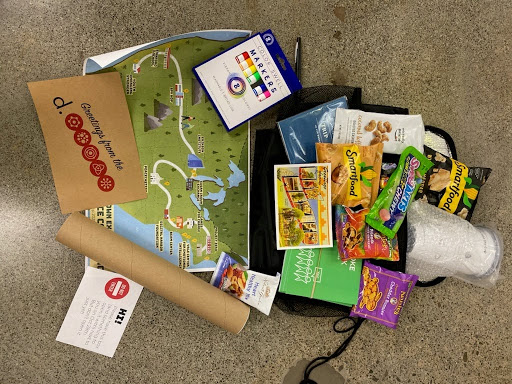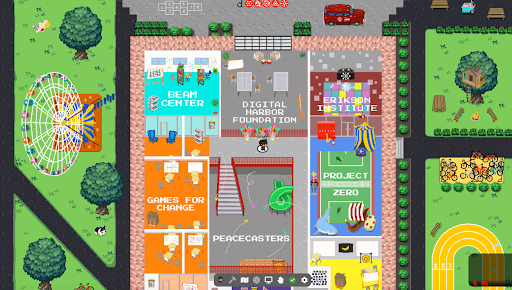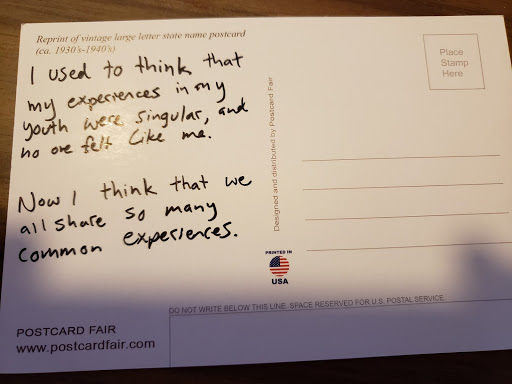Convening Our Youth Voice Cohort… Virtually
By the Susan Crown Exchange, featuring insights from the Stanford d.school.
When we launch a Challenge, we do so with the intent of building a cohort of organizations that work together towards a common goal. This cohort serves as a community of practice where each partner can learn from the others and all can share common insights.
We assembled our Tech and Society Youth Voice cohort in pursuit of the answer to a single question: How can young people inspire their peers to use technology in healthy ways and make digital spaces better for everyone?
By the time we convened the nine organizations in this cohort for the first time, this question had gained newfound importance. Most of our partners’ staff were working remotely, and the young people they served were almost entirely in online school.
The state of the human-tech paradigm was on everyone’s minds—and the need to improve it was more urgent than ever.
When we began planning our first convening of our Youth Voice cohort, we were faced with a unique challenge. How could we create a space that facilitates connection, surfaces learning, and elevates youth voice—all in an entirely virtual environment?

The Convening
Based on a strong proposal that highlighted creative, tech-enabled solutions for a virtual convening, we selected the Stanford d.school as our facilitators. After a series of empathy interviews with the cohort members, we set three primary goals for this first convening: 1) authentically incorporate youth voice; 2) focus on community and trust; and 3) spark moments of joy.
This convening is an initial step in a two-year process: in addition to running programs for hundreds of young people across the country, these nine organizations will convene twice more, share collective insights, and contribute to resources that aim to support a nascent field. But in order to ensure that we can achieve these outcomes, we felt that an initial focus on community-building was the best first step.
Elevating youth voice
While engaging youth as leaders in their own solutions is a critical effort, it’s also a challenge. When young people and adults work together, power dynamics between them can make young people feel uncomfortable speaking up. On the other hand, separating youth from adults entirely can lead to valuable insights being “lost in translation.”
D.school’s solution was to leverage both approaches. The week before the convening, they organized an Unconference—a virtual event where young people set the agenda and led their own discussion groups.
We quickly saw the value of this effort. D.school opened the Unconference with an exercise where young people articulated the world they desired and worked backwards to imagine the resources and tools they would need to create that space.
The youth then transitioned into small discussion groups structured around self-selected topics. They chose issues that we wouldn’t necessarily have linked to tech, such as climate change and racial justice. However, we soon learned that young people saw clear connections between those issues and the role of technology—connections that mirrored how seamlessly young people integrate that technology into every part of their lives.
The d.school dedicated an entire hour of the larger convening to sharing learnings like these with the full group. They also created additional space for youth perspectives, including one-on-one conversations between adults and youth and a larger “fishbowl” space where young people took the stage. This ensured that youth had several types of platforms in which they could truly speak for themselves.
Building Community
While we knew how important it was to foster community within the cohort, we were initially torn on how to do so. Namely, how should we balance this goal with our other objectives of sharing learning and creating resources that would build a stronger field?
Ultimately, we decided to focus convening #1 almost entirely on community and relationships. Most of these organizations didn’t know one another before the convening; by creating a space of trust from day one, we hoped that each organization would feel comfortable enough to later share the vulnerable stories that inspire authentic learning.
Once again, the d.school employed creative facilitation techniques towards this goal. They opened day one with a “jigsaw” activity in which a representative from each organization had a one-on-one conversation with at least one person from every other organization. Second, they facilitated a conversation around equity that encouraged us to think critically about how our personal identities informed our work. And lastly, they encouraged us to share stories of success rather than challenges—recognizing that collective problem-solving can be valuable, but only when it’s approached from a place of deep trust.
One of our favorite stories came from PeaceCasters, an organization based in Louisville, Kentucky. The PeaceCasters team shared the example of a program that encourages young people born in other countries to tell their migration stories. The two students they highlighted supported each other at every step of the months-long program, from helping one another with English to giving each other the courage to share their experiences to a room full of adults. By fostering a program culture rooted in mutual support and authentic peer-to-peer leadership, PeaceCasters created what they call an “environment of empowerment.”
By the end of day two, we were blown away by the openness and honesty displayed by each and every person at our convening. We feel strongly that an initial focus on community-building built a foundation of trust that will inspire valuable learning in future gatherings.
Moments of Joy
While we are grateful for the technology that allowed us to convene at all, we were concerned that a virtual convening might pale in comparison to an in-person gathering. D.school took steps to address this, leveraging technology both to recreate an in-person convening and to create experiences that wouldn’t be possible in an analog world.
D.school layered a metaphor of a “road trip” into the entire convening—from mailing a box of snacks to each participant to a “virtual carpool” through Zion National Park that each of us shared with another attendee. They also created an “online town” that mimicked the spontaneous mingling that happens in the hallways, breaks, and happy hours at a real conference.
The creativity and magic that d.school infused into the event was the “special sauce” that pulled the whole thing together. By ensuring that participants enjoyed the experience, d.school fostered a collective goodwill that contributed greatly to a sense of community ownership of this work.

What did we learn?
We never expected our first Tech and Society convening to be…well, so dependent on technology. But by leveraging tech to interrogate our own relationships to it, we may have achieved insights that were even more prescient. Here are our main takeaways from the first convening of the Youth Voice cohort.
- Online convenings can work. Virtual events need not be pale imitations of in-person gatherings. When approached with creativity, they can promote connection and spark joy in ways that wouldn’t be possible in person.
- Meaningful inclusion of youth is critical. When designing solutions for young people, it’s not enough to simply ask them to weigh in. We must think creatively about how they can participate in every aspect of the design process—and make sure they feel comfortable speaking up.
- Focusing on the positives builds trust. We were tempted to dive straight into a discussion around common challenges. We’re glad we didn’t. Focusing on success stories first ensured that we built a foundation of trust—a foundation that will make future discussions more robust.
- Those closest to the problems are closest to the solutions. We invited several participants from each of our partners: a member of the leadership team, a member of the programs team, and a young person participating in the program. Each of these people comes to the table with a distinct point of view; by bringing all of these perspectives together, we can build a stronger solution.
- We must always look at this work through a lens of equity and inclusion. Our identities play a hugely important role in how we relate to technology. If we don’t prioritize diverse working groups and marginalized voices, we risk designing solutions that don’t work for everyone.
- “Youth-led” means different things to different people. Some of these projects engage young people as researchers, some as designers, some as facilitators, and some as all three. All are equally valid forms of leadership. What unites these projects is their genuine commitment to valuing youth perspectives and elevating youth voice.

What’s next?
For the nine members of our cohort, the work continues. Beyond the convening, each of these organizations is running a program where young people research, design, discuss, and implement solutions that foster positive and productive relationships with technology. All of these projects are well underway; we look forward to sharing updates from select organizations over the coming months.
On our end, now that we’ve built a strong foundation of trust among participating organizations, we will work with the d.school to design consultancies: one-off projects where cohort members can partner around common challenges and work towards shared solutions. Beyond that, we look forward to planning our second convening for the summer of 2021, where we hope to gather in person.
In a world where so many of our interactions have moved online, we are eager to learn from the practitioners and youth who are true experts in this subject. We look forward to sharing their wisdom with others interested in this emerging field.
